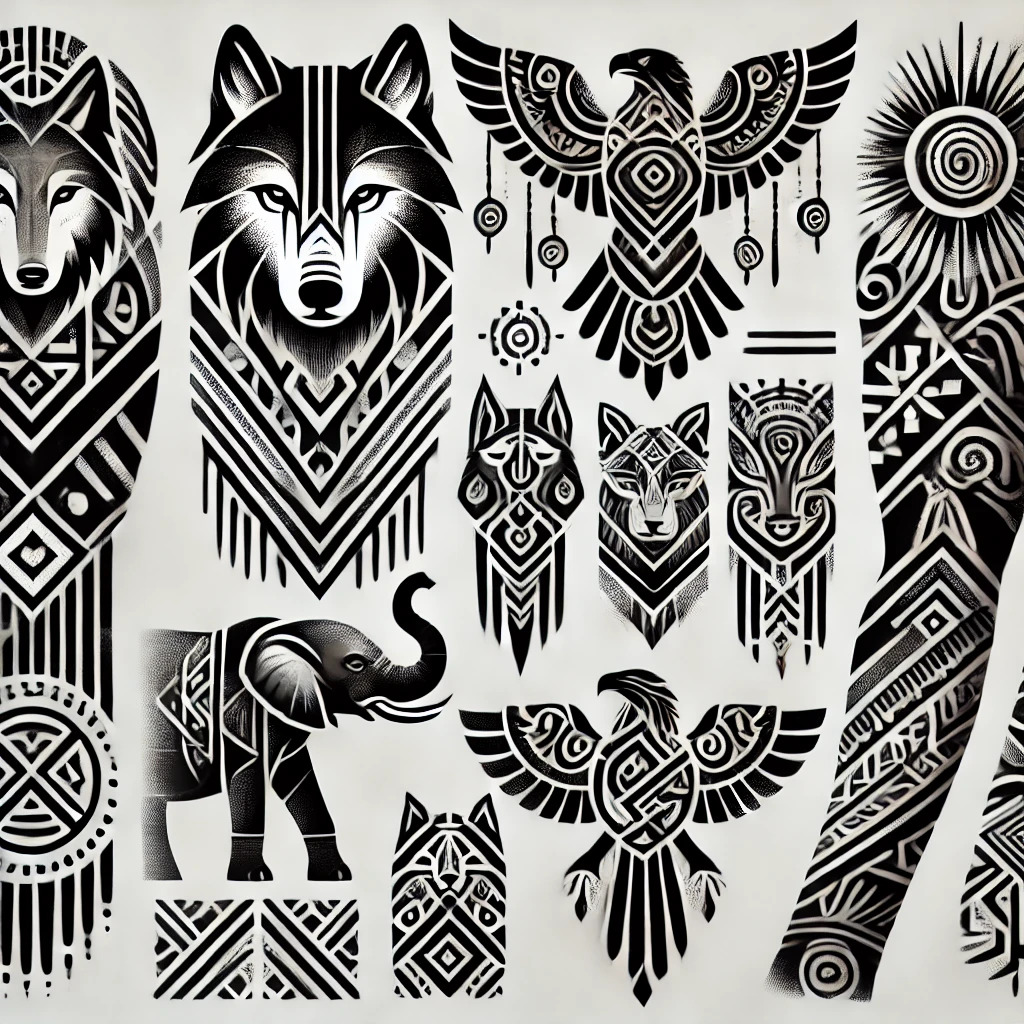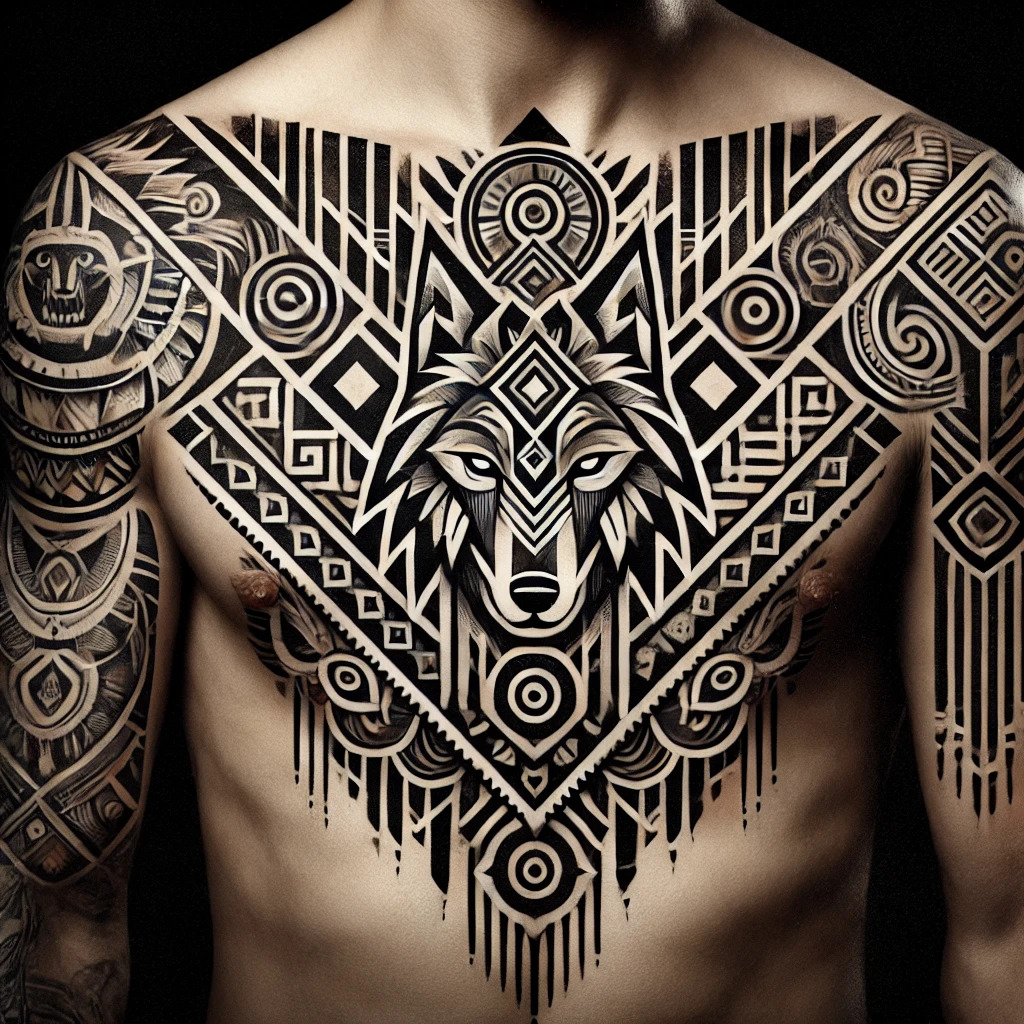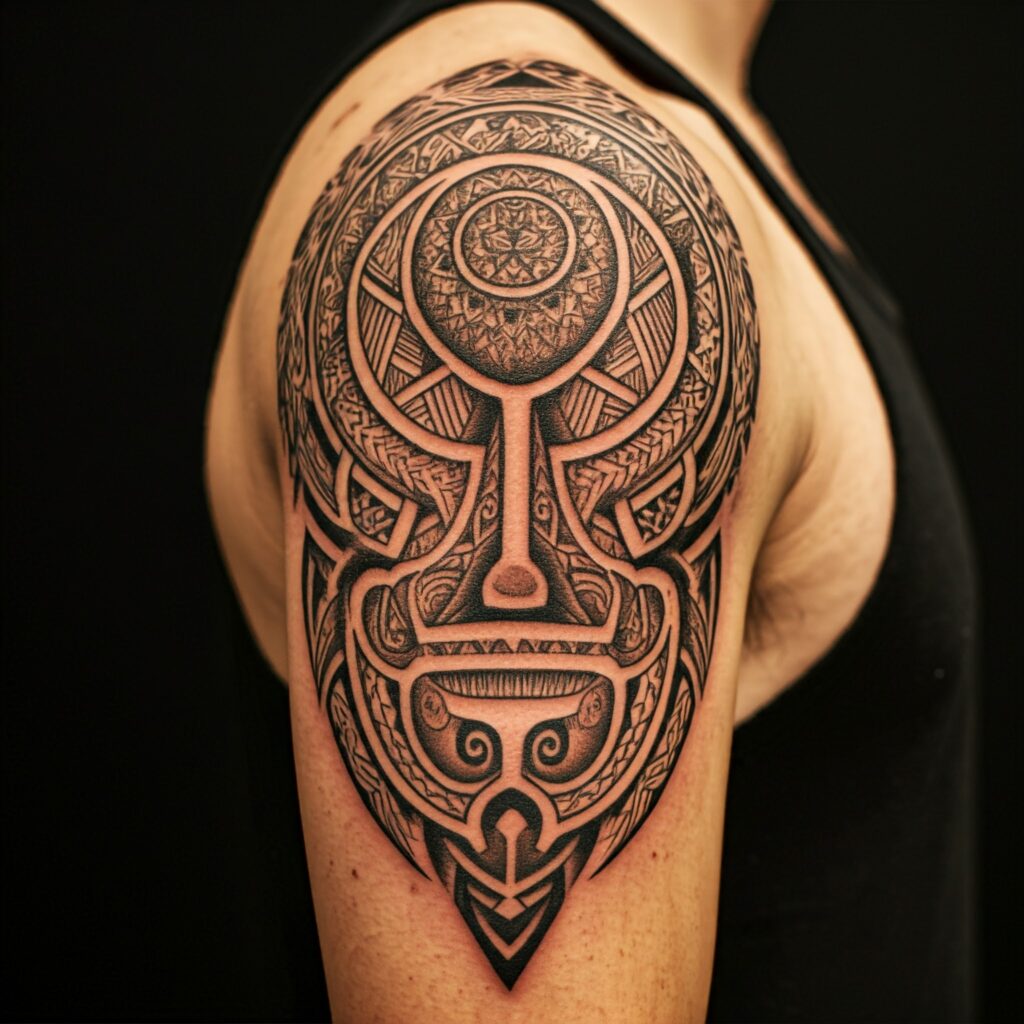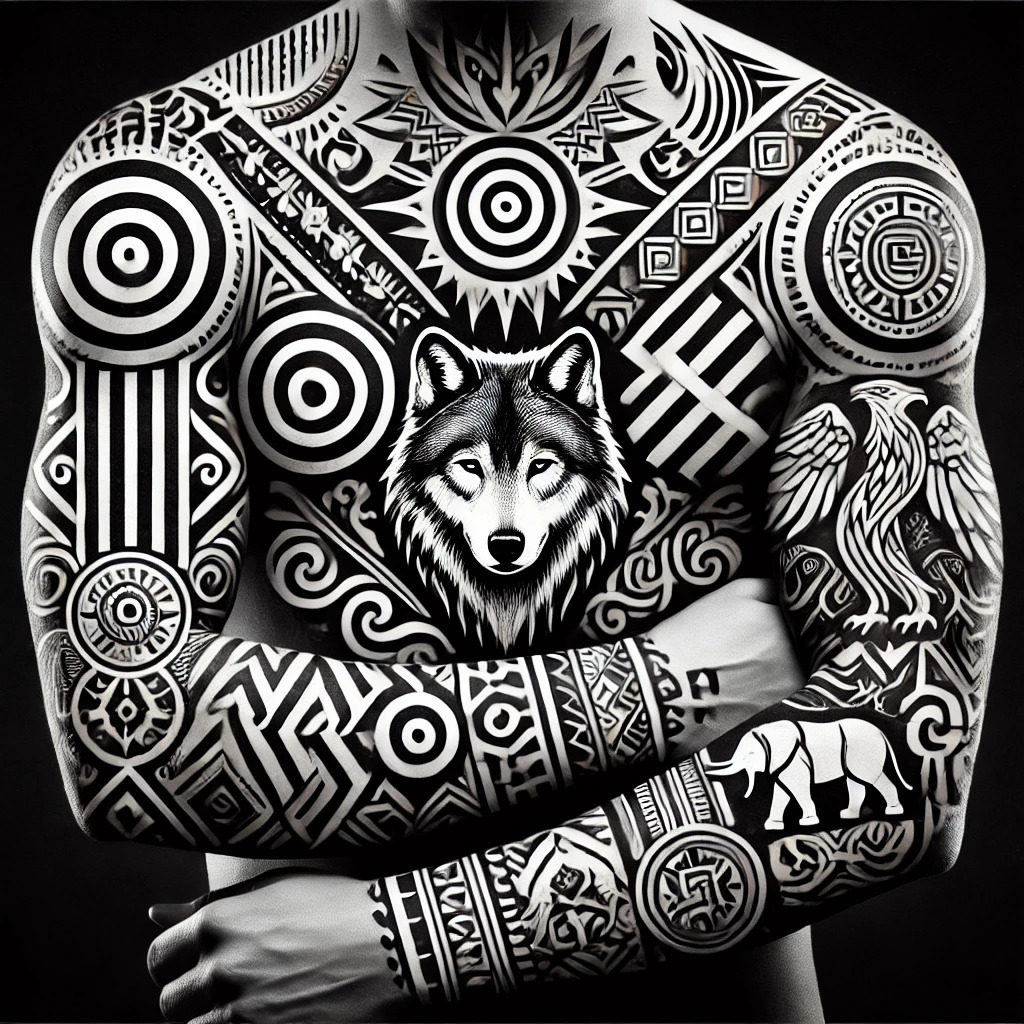For centuries, tribal tattoos have been more than just a form of self-expression; they carry profound significance rooted in ancient cultures and traditions. These intricate designs are a visual language, with each symbol telling a unique story. Originating from indigenous tribes, they were often used to mark identity, represent beliefs, and commemorate important events. Today, these tattoos remain a powerful form of connection to heritage and cultural identity, admired for their striking appearance and the sense of history they convey.
As someone fascinated by the artistry of tattoos, I remember my first encounter with a tribal design. The bold, visually stunning patterns drew me in, but it was the symbolism behind them that truly captivated me. Every curve and line seemed to hold a world of knowledge about ancient civilizations like the Egyptians, Greeks, and Romans, where tattoos served as marks of social groups, slaves, or even criminals. But it was the indigenous tribes that perfected this art into a tradition of storytelling and cultural importance, creating timeless designs that resonate even in modern times.
Read More For Shine Tattoo Skin
Whether you’re considering a tribal tattoo for its aesthetic appeal or rich history, it’s important to understand the origins and evolution of this enduring style. These tattoos are more than just ink—they’re a connection to a world of symbolism that transcends generations, offering a way to celebrate personal and shared identity.

Understanding the Tribal Tattoos Represent
Tribal tattoos, as the name suggests, draw their inspiration from the body art customs of diverse cultures worldwide. Recognized for their strong dark lines, geometric forms, and repetitive motifs, these designs captivate with their bold aesthetics. However, their appeal goes far beyond appearance, embodying profound symbolism tied to social standing, ancestry, and spiritual convictions. In my experience, exploring the origins of these tattoos reveals how deeply they are rooted in history and identity.
Across various indigenous societies, tribal tattoos have served as a rite of passage and a medium for connecting with ancestors. Each tribe brings its distinct style and symbols, reflecting its history, traditions, and spiritual beliefs. For example, in Maori culture, the sacred “moko” tattoos intricately tell stories of lineage, achievements, and social status, serving as a living testament to identity. Similarly, in Polynesian cultures, tattoos like “tatau” symbolize strength, courage, and protection.
Among Native American cultures, these tattoos often honor heritage while connecting the wearer with the spiritual world. Designs featuring animals, nature, or other significant cultural symbols are believed to provide guidance, protection, and strength, making them a personal and cultural emblem. Tribal tattoos are more than designs—they’re an intricate blend of tradition, identity, and spiritual significance.
The Rich History of Tribal Tattoos
The history of tribal tattoos spans millennia, showcasing their role as more than mere adornment. From the elaborate spirals cherished by the Maori community in New Zealand to the bold geometric designs of African tribes, these tattoos served as symbols of transition, accomplishment, and even safeguarding. In tribal cultures, tattoos were deeply integrated into life, marking coming-of-age ceremonies, marriages, or victories in battle. As a visual representation of status and connection to one’s tribe, these tattoos carried profound meaning.
In some tribes, tattoos were also believed to offer protection. For instance, among the Kayan tribe in Southeast Asia, women bore intricate neck tattoos, often referred to as “giraffe necks,” to ward off evil spirits and promote good luck. Similarly, in African tribes, tattoos played a central role in rituals and ceremonies. Young boys undergoing painful tattooing rituals proved their bravery and transitioned into manhood, receiving tattoos believed to bring strength and safeguard them from harm.
Through these practices, tribal tattoos became more than body art—they became living symbols of identity, protection, and tradition, carried across generations as a testament to courage and belonging.

Symbolism and Meaning of Tribal Tattoos
Tribal tattoos are deeply rooted in symbolism, where every pattern or symbol conveys unique meanings tied to life, nature, or spirituality. For instance, creatures like sharks, eagles, and wolves symbolize resilience, bravery, and safeguarding. Similarly, spirals are often used to reflect the cycles of life, personal journeys, and spiritual unity, while strong lines embody strength and protection.
In Maori culture, the spiral symbol stands for the journey of life and the connection between the physical and spiritual worlds. A notable design is the koru, inspired by an unfurling fern frond, which symbolizes new beginnings, growth, and harmony. In Polynesian cultures, geometric patterns such as arrows, waves, and sun rays dominate tattoo designs, representing elements of nature like the sea, sun, and land while carrying meanings of fertility, protection, and strength.
Through their intricate designs, tribal tattoos tell stories that honour spiritual beliefs, cultural identity, and the relationship between humans and the natural world.
Choosing the Perfect Tribal Tattoo Design
Selecting a tribal tattoo design is an exciting journey, offering a chance to connect with a design that reflects your personal or cultural significance. With a wide variety of styles and symbolic interpretations available, exploring different patterns can help you discover the one that resonates deeply with your identity. Don’t hesitate to add a personalized touch by incorporating initials, birth symbols, or elements tied to your unique story.
Some popular tribal tattoo concepts might spark your imagination. For example, elephant tattoos embody power, intelligence, and favourable fortune, while eagle tattoos represent liberation, strength, and authority. If you’re drawn to the idea of wisdom and protection, tribal owl tattoos could be an ideal choice. Alternatively, lion tattoos stand for bravery, nobility, and power, while scorpion tattoos symbolize safeguarding, peril, and metamorphosis. For those seeking a design that reflects fidelity, kinship, or instinct, tribal wolf tattoos are a meaningful option.
No matter the design you choose, a tribal tattoo serves as more than just an aesthetic—it’s a celebration of personal expression, identity, and symbolic connection.
Ideal Placement for Tribal Tattoos
The placement of a tribal tattoo plays a crucial role in showcasing its visual appeal and intricacy. These tattoos are incredibly versatile and can make a striking impact on various parts of the body. Popular choices for placement include the arms, shoulders, back, and chest, areas that naturally highlight the design’s dimensions and details.
When selecting the ideal location, consider the size and complexity of your tribal tattoo design. A larger, more intricate piece might look best on the back or chest, while smaller, simpler designs often stand out beautifully on the arms or shoulders. Choosing the right placement not only enhances the tattoo’s aesthetic but also ensures it harmonizes with your body’s natural contours.
The Connection Between Tribal Tattoos and Identity
Tribal tattoos have long been a powerful expression of personal identity, deeply rooted in indigenous cultures. Traditionally, these tattoos served as visual symbols of one’s heritage, beliefs, and values, often marking their place within their tribe or community. They were more than art—they were a statement of belonging and a reflection of cultural pride.
In modern times, tribal tattoos continue to resonate with those seeking to honour their roots or express their individuality. For many, these tattoos symbolize important facets of their life, such as family, spirituality, or cultural heritage. Whether tied to ancestry or personal growth, a tribal tattoo carries a profound connection to one’s identity and a celebration of their unique journey.

Cultural Appropriation and Tribal Tattoos
The cultural appropriation of tribal tattoos has sparked growing controversy in recent years. This occurs when individuals from another culture adopt elements of one culture without fully understanding or respecting their cultural significance. For many, this is seen as a form of disrespect or even cultural theft, particularly when the rich history and profound meaning of tribal tattoos are overlooked.
When people from non-indigenous backgrounds get tribal tattoos without honouring their heritage or context, it can diminish their importance to Indigenous communities. To avoid this, it’s crucial to approach these tattoos with genuine respect and a willingness to learn. Taking the time to understand the history and significance of the design, or consulting with a tattoo artist who specializes in tribal tattoos, ensures that the choice is meaningful and culturally informed.
Read More For How old you to get a Tattoo
Conclusion
Tribal tattoos are much more than just body art; they are symbols of heritage, identity, and spiritual beliefs that have transcended generations. Whether representing strength, protection, or personal growth, these tattoos continue to hold deep meaning for both indigenous cultures and modern individuals. However, it’s crucial to approach tribal tattoo designs with respect, ensuring a proper understanding of their cultural significance to avoid cultural appropriation. By honouring the history behind these tattoos, we can appreciate their rich symbolism and incorporate them into our own journeys in a meaningful way.
